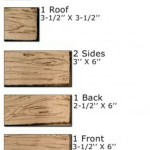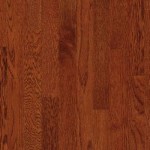Black Oak Laminate Flooring: A Comprehensive Overview
Black oak laminate flooring offers a striking aesthetic for residential and commercial spaces. Its dark hue and simulated wood grain pattern contribute both visual appeal and a sense of sophistication. Understanding the characteristics, benefits, and considerations associated with this flooring option is essential for making informed purchasing decisions.
Laminate flooring, in general, is a multi-layered synthetic flooring product fused together through a lamination process. It simulates the look of real hardwood flooring, but with a different construction and often a lower price point. Black oak laminate, specifically, replicates the appearance of black oak wood, a species known for its rich, dark tones and distinctive grain patterns.
The construction of laminate flooring typically involves four layers. The bottom layer, known as the backing layer or balancing layer, provides structural stability and protects against moisture. Above this is the core layer, usually composed of high-density fiberboard (HDF) or medium-density fiberboard (MDF), which provides the flooring's strength and resistance to impact. The decorative layer is a high-resolution photographic image of black oak, providing the visual appearance of real wood. Finally, the wear layer is a transparent, protective coating that safeguards the decorative layer from scratches, stains, and fading. The thickness and quality of the wear layer significantly impact the durability and longevity of the flooring.
Various factors contribute to the popularity of black oak laminate flooring, including cost-effectiveness, ease of installation, and maintenance. However, a thorough understanding of its characteristics, benefits, and potential drawbacks is critical for making an informed decision.
Cost and Budget Considerations
One of the primary advantages of black oak laminate flooring is its lower cost compared to solid hardwood. Solid black oak flooring can be significantly more expensive due to the scarcity of the wood and the labor-intensive manufacturing process. Laminate flooring offers a more affordable alternative that delivers a similar aesthetic appeal. The price of black oak laminate varies depending on the quality of the materials used, the thickness of the wear layer, and the brand.
In addition to the cost of the flooring itself, installation expenses should also be considered. While professional installation is an option, many homeowners choose to install laminate flooring themselves as a DIY project. Laminate flooring is typically designed with a click-lock system, which allows for easy and quick installation without the need for glue or nails. However, proper preparation of the subfloor is crucial for a successful installation. A level and clean subfloor is essential to prevent unevenness, squeaking, and other issues. The cost of underlayment, which provides cushioning, sound insulation, and moisture protection, should also be factored into the budget.
Ongoing maintenance costs are generally lower for laminate flooring compared to hardwood. Laminate flooring is resistant to stains and spills and can be easily cleaned with a damp mop or cloth. However, it is important to avoid excessive moisture, as this can damage the core layer of the flooring. Regular sweeping or vacuuming is recommended to remove dirt and debris that can scratch the wear layer.
Long-term cost considerations should also include the lifespan of the flooring. While laminate flooring is durable, it is not as long-lasting as solid hardwood. With proper care and maintenance, a quality black oak laminate floor can last for 10 to 20 years, depending on the quality of the product and the level of foot traffic.
Aesthetic Versatility and Design Applications
Black oak laminate flooring offers a bold and sophisticated aesthetic that can enhance the visual appeal of various interior design styles. Its dark color provides a dramatic contrast to lighter-colored walls and furniture, creating a sense of depth and dimension in a room. The simulated wood grain pattern adds texture and visual interest, mimicking the natural beauty of real black oak wood.
The versatility of black oak laminate flooring allows it to be used in a wide range of applications. It can be installed in living rooms, bedrooms, dining rooms, kitchens, and hallways. Its durability and resistance to scratches and stains make it a suitable choice for high-traffic areas. However, laminate flooring is not recommended for bathrooms or other areas with high moisture levels, as excessive moisture can damage the core layer.
Black oak laminate can complement various design styles, from modern and contemporary to traditional and rustic. In modern interiors, it can create a sleek and minimalist look when paired with clean lines and neutral colors. In traditional settings, it can add warmth and elegance when combined with classic furnishings and rich textiles. In rustic designs, it can enhance the natural and earthy feel when paired with natural materials and textures.
The dark color of black oak laminate can also be used to create different moods and atmospheres in a room. It can create a sense of drama and sophistication in formal spaces, while also providing a cozy and inviting feel in more casual settings. The choice of lighting can further enhance the impact of the flooring, with warm lighting creating a more intimate atmosphere and cool lighting creating a brighter and more modern look.
Consideration should be given to the overall color scheme of the room when selecting black oak laminate flooring. Lighter wall colors and furniture can help to balance the darkness of the floor, preventing the room from feeling too closed-in or oppressive. Accents of bright colors can also add visual interest and contrast. Conversely, darker hues can create a more dramatic and intimate atmosphere.
Installation and Subfloor Preparation
The installation process for black oak laminate flooring is relatively straightforward, particularly with the click-lock systems that are commonly used. These systems allow the planks to be easily connected without the need for glue or nails. However, proper preparation of the subfloor is essential for a successful installation and to prevent problems such as unevenness, squeaking, and buckling.
The subfloor must be clean, level, and dry before installing laminate flooring. Any existing flooring, such as carpet or vinyl, should be removed. The subfloor should be inspected for any signs of damage or moisture. If there are any cracks or holes, they should be repaired with a patching compound. If the subfloor is uneven, it may need to be leveled with a self-leveling compound or by sanding down high spots.
An underlayment should be installed between the subfloor and the laminate flooring. Underlayment provides cushioning, sound insulation, and moisture protection. It also helps to smooth out any minor imperfections in the subfloor. Different types of underlayment are available, including foam, cork, and rubber. The choice of underlayment will depend on the specific needs of the installation and the desired level of sound insulation and moisture protection.
Before starting the installation, the laminate flooring should be allowed to acclimate to the room's temperature and humidity for at least 48 hours. This will prevent the flooring from expanding or contracting after installation, which can cause gaps or buckling. The planks should be laid out in the room to determine the best layout and to avoid any awkward cuts or patterns.
When installing the laminate flooring, it is important to leave a small expansion gap around the perimeter of the room. This gap allows the flooring to expand and contract with changes in temperature and humidity. The expansion gap will be covered by baseboards or quarter-round molding after the installation is complete.
For complex installations, such as those with doorways, corners, or pipes, careful planning and precise cutting are essential. A saw with a fine-tooth blade should be used to cut the laminate flooring. It is also important to use safety glasses and gloves to protect yourself from injury.
While DIY installation is feasible for many homeowners, professional installation may be preferred for complex or large-scale projects. Professional installers have the experience and tools to ensure a proper and efficient installation. They can also provide guidance on subfloor preparation and underlayment selection.
Careful consideration of these factors will contribute to a successful installation and ensure the longevity and aesthetic appeal of black oak laminate flooring.

Diamond Black Oak 8mm Laminate Flooring Floors 4 You

Pergo Pure Black Oak Laminate Flooring 5x7 Ths Mo 537737 The Home Depot

Kronospan Supernatural Bedrock Oak Flooring Supplies

Black Laminate Flooring Vintage Herringbone Oak 12mm Floor

Falquon High Gloss Canyon Black Oak Laminate Flooring 8mm Exclusive Surfaces Direct

Bestlaminate Livanti Woodridge Aspen Black Oak 5mm 20 Mil Spc Vinyl Flooring W Pad

Kronoswiss Swiss Prestige Black Oak L8677wg Laminate Flooring

Pergo Outlast Pure Black Oak 12 Mm T X 7 4 In W Waterproof Laminate Wood Flooring 1079 Sqft Pallet Lf001014p The Home Depot

Black Oak Ocean 8mm Laminate Flooring Leader

Egger 8mm Shadow Black Oak Laminate Flooring
Related Posts








